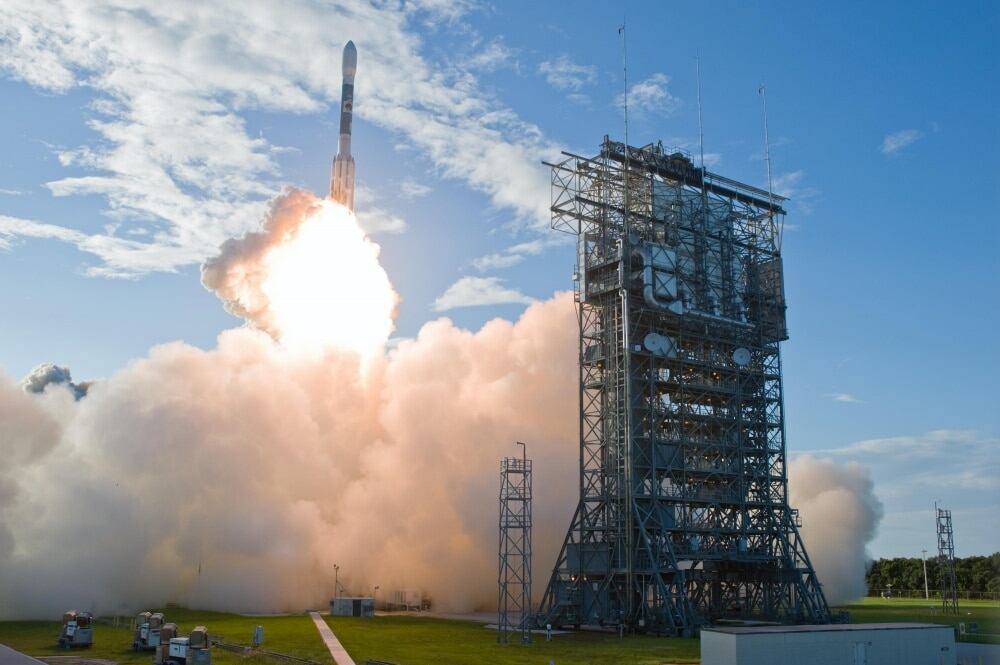WASHINGTON — Congress made another aggressive push for space-based missile defense by carving out language in the fiscal 2018 defense policy bill that asks the Missile Defense Agency to develop capabilities to track and respond to missile attacks from space.
Specifically, the bill would require MDA to develop both a persistent space-based sensor architecture and a space-based ballistic missile intercept layer.
The language also teases out what could be the Pentagon’s recommendations stemming from the yet-to-be-released Ballistic Missile Defense Review expected by the year’s end. Because it hasn’t been published, conferees placed a caveat in all sections of missile defense language in the report stating that the MDA should only commence with strategies and plans in the National Defense Authorization Act if they are consistent with the recommendations of the review.
Some experts believe that gaining space-based missile defense capability may be more critical to outpacing the threat than anything that can be done to improve the system on the ground. They say that space-sensors increase the lethality and effectiveness of ground-based interceptors within the GMD system but also add capability to other elements of the overall system, such as the Patriot missile defense system, the Terminal High Altitude Area Defense system and the Aegis system.
RELATED

Congress wants the MDA to develop “a highly reliable and cost-effective” persistent space-based sensor architecture designed to perform a variety of functions to include “control of increased raid sizes,” “precision tracking of threat missiles,” fire-control quality tracks of evolving threat missiles,” “discrimination of warheads,” and “effective kill assessments.”
The layer should also be able to integrate with command-and-control battle management systems within the BMDS and integrate with other elements like THAAD, Aegis, Aegis Ashore and Patriot.
Congress requires the MDA to deliver a plan no later than one year past the enactment of the law on how it will develop the sensor architecture including cost estimates and an acquisition plan to include operation and sustainment over the course of the life of the system.
The plan should also include an assessment of the maturity levels of critical technologies needed and how technologies can be rapidly matured. And the MDA should also include an analysis of what new capabilities the architecture bring that are not already part of other sensor architectures.
The report also requires the MDA to develop a space-based ballistic missile intercept layer that is regionally focused, capable of intercepting threats in the boost-phase of flight, and achieves an operational capability “at the earliest practicable date.”
RELATED

Congress is giving the MDA one year past the enactment of the legislation to produce a plan to achieve the capability over a 10-year period, according to the report.
Lawmakers want a concept definition phase as part of the plan that would consist of multiple contract awards “to identify feasible solutions consistent with architectural principles, performance goals and price points.”
Following that, conferees also want a technology risk reduction phase with three competitively awarded contracts to mature technologies, algorithms, components and subsystems, the report states.
This phase would produce a “medium-to-high fidelity” digital representation of an intercept weapon system and a test schedule that leads to a live-fire boost phase intercept during fiscal year 2022 if the technology is mature, according to the legislation.
A technology development phase would result in two competitively awarded contracts to mature the weapon system concepts and potentially conduct the FY-22 live-fire.
Congress is also requiring the MDA to establish a space test bed for the weapon systems to conduct research and development for a space-based defensive layer to include space-based interceptors and directed energy platforms.
Also tackling the boost-phase intercept challenge, Congress wants the agency to “rapidly” develop and demonstrate a boost phase intercept capability “as soon as practicable,” the report states.
The demonstration should incorporate existing technologies and be developed in cooperation with U.S. Pacific Command to address “emerging threats and heightened tensions in the Asia-Pacific region,” according to the report.
The reports asks the defense secretary to submit with the president’s fiscal year 2019 budget request a plan to achieve the boost-phase capability requirement to include funding and a test schedule.
Jen Judson is an award-winning journalist covering land warfare for Defense News. She has also worked for Politico and Inside Defense. She holds a Master of Science degree in journalism from Boston University and a Bachelor of Arts degree from Kenyon College.








